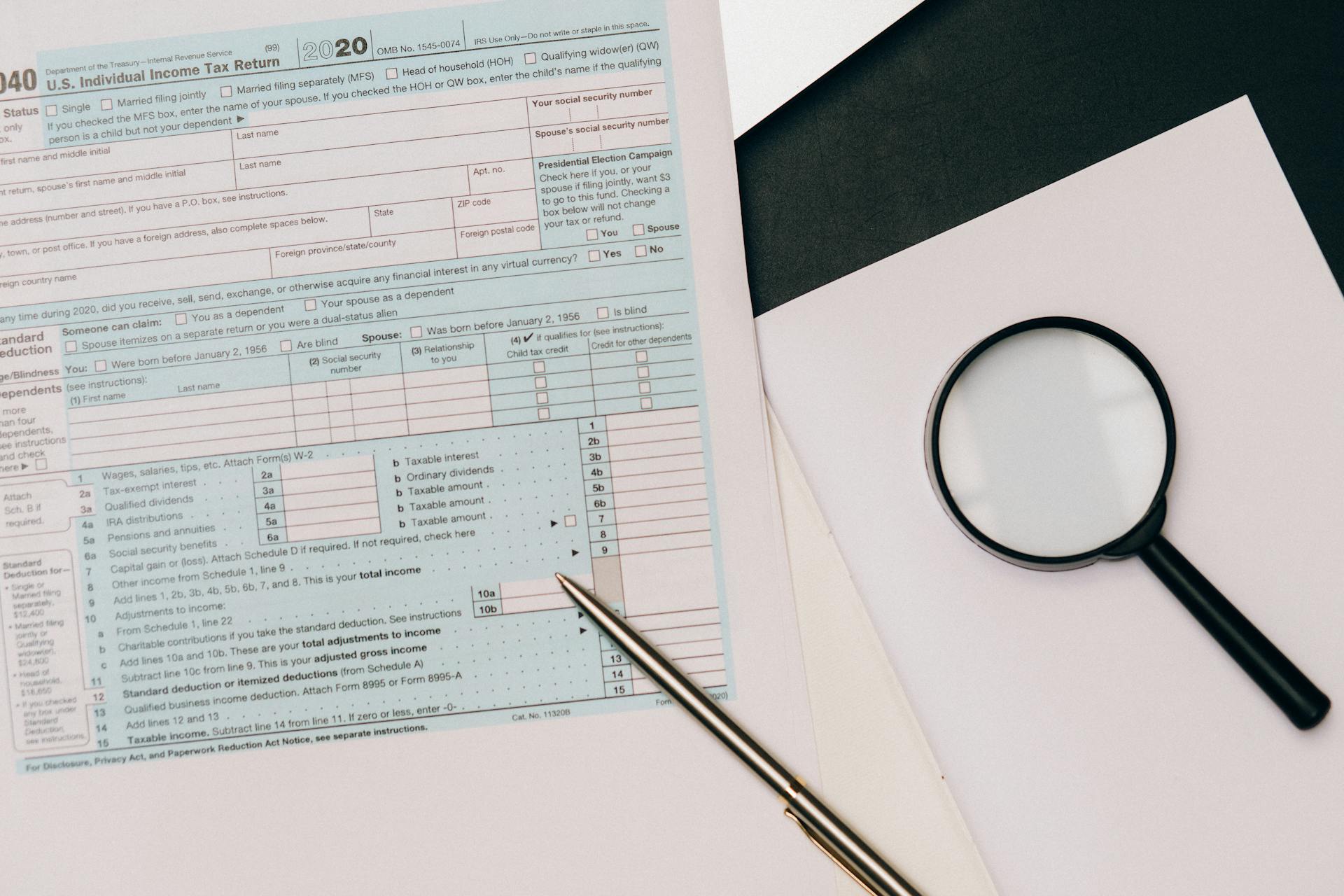
Filing IRS Form 941 can be daunting for any business owner, but it doesn't have to be. With the right tools, filing this form can be effortless and stress-free. This complete guide will provide you with simple steps that will help you file Form 941 accurately and efficiently.
Form 941 is used by employers to report tax withholding amounts, estimated income tax payments, employer payments made towards social security, Medicare taxes, and FICA taxes. If you are paying employees or withholding federal taxes from their paychecks, then filing Form 941 is a crucial part of your payroll tax reporting responsibilities.
For businesses impacted by the ongoing COVID-19 pandemic, filling out the Form 941 has become even more important due to the introduction of coronavirus tax credits. The Internal Revenue Service (IRS) Form 941 now includes new lines for employers to claim these credits. So whether you're filing for the first time or have been doing so for years, this article will walk you through everything you need to know about how to file Form 941 with ease.
For more insights, see: What Is Irs Form 843
File Form 941: Your Complete Guide to Payroll Tax Reporting
If you're an employer, filing IRS Form 941 is crucial for payroll tax reporting. This quarterly report outlines the federal income taxes you withheld from employee paychecks based on their W-4 forms and withholding amounts due based on social security wages and employees' Medicare. On top of that, it also shows your employer portion of FICA taxes, which includes Social Security and Medicare contributions.
But don't worry, the process isn't as complicated as it sounds. The form itself is only two pages long and can be filed electronically or by mail. Plus, there are several tax credits available to employers through the COVID-19 related tax relief program that can help reduce the amount of taxes due.
So whether you're a seasoned employer or just starting out, make sure to file Form 941 accurately and on time. It not only helps keep track of your business's finances but ensures compliance with federal tax laws as well.
Recommended read: Ein Employer Identification Number
Maximize Your COVID-19 Tax Credits with Form 941

The 2020 COVID-19 pandemic has created many challenges for businesses, including paying employees and keeping up with employment taxes related to those wages. To help alleviate some of these difficulties, tax credits were introduced to encourage businesses to keep their staff employed. The Employee Retention Tax Credit (ERC) encourages businesses to keep paying employees by allowing them to defer payment of certain employment taxes.
Quarter employers can claim the ERC on Form 941 when filing tax returns. By simply reducing their employment tax deposits or applying for advance payments through Form 7200, they can maximize their tax credit prior to June 30, 2021. Additionally, sick leave and family leave tax credits are available for businesses that give paid sick leave or family leave due to work-related issues caused by COVID-19.
Employers must use Form 941 to report their employment taxes related to employee wages and sick leave/family leave tax credits from April 1, 2020, through March 31, 2021. With the American Rescue Plan Act of 2021 adding new provisions in April of this year, there are even more opportunities for eligible employers with less than 500 employees to claim tax credits on their employment taxes. These credits will be available until September 30, 2021—so make sure you're keeping part of your income by filing Form 941!
You might enjoy: Should I File Claim with My Auto Insurance or Theirs
1. Key Takeaways
Key Takeaways: IRS form 941, also known as the Employers Quarterly Tax Return, reports withholding for federal income taxes, employees wages, social security withholdings (FICA taxes), and employees Medicare. The 2020 Form 941 includes special tax provisions brought on by the coronavirus pandemic. It's important to follow Internal Revenue Service instructions and tips for recordkeeping and reporting, including COVID-19-related tax credits. The recent American Rescue Plan Act extends these credits and is worth checking out. By clicking accept on this site, you can enhance site navigation, analyze site usage data, and improve marketing efforts.
Mastering the Art of Filing IRS Form 941 Effortlessly
Are you struggling to file Form 941 each quarter? Don't worry, mastering the art of filing this form can be accomplished effortlessly. It's essential to understand that Form 941 is used for reporting payroll taxes and social security, medicare, and income tax withholding. Ensure your figures are accurate, keep track of deadlines, and use reliable software or a professional service to help you file Form 941 correctly every time. With these tips in mind, filing Form 941 will become a breeze, saving you time and stress in the future.
1. Mail
When filing form 941, it's important to make sure it's addressed correctly and sent out in time for the due date. The postal service can be unreliable, so it's best to send it out early. Due dates vary depending on your situation, but if you're sending a return through the postal service, the listed addresses can also vary. Private delivery services (PDS) are approved by the IRS, and PDS deliveries are just as valid as those made electronically. IRS addresses can also be picked up from their website.
Explore further: Pay Irs Options
2. Online
If you're an employer, you'll need to file Form 941 on a regular basis. One of the easiest ways to do this is by filing online. E-file lets you file Form 941 and make payments electronically, meaning you can complete the entire process from start to finish without leaving your computer. And with government services like the IRS Form 941 e-file option or the Form Online EFTPS payment service, it's never been easier to get your taxes filed and paid on time. So why not take advantage of these options and file Form 941 today – it's simple, convenient, and efficient!
Discover more: File Business Taxes Free Online
Discover the Best Place to Obtain Form 941!
Looking for the best place to obtain Form 941? Look no further than the IRS website! On their website, you can find a blank copy of Form 941 that you can easily download onto your hard drive. Once you fill it out, simply print out the finished copy and send it off. It's as easy as that! Plus, using the official IRS form ensures that you are complying with all necessary regulations and avoiding potential penalties. So head over to the IRS website and get started on filing your Form 941 today!
Expand your knowledge: Irs Notice 2023-54 Inherited Ira
Discover When You Need to Submit Your Form 941
Filing Form 941 is a vital aspect of being a responsible employer. This form is used to report employment taxes withheld, Medicare and Social Security taxes, and any additional taxes that the employer owes. The reporting period for Form 941 is based on calendar deadlines that occur quarterly throughout the year.
The first quarter's Form 941 deadline is April 30th, covering the period from January 1st through March 31st. The second quarter's deadline falls on July 31st, covering the period from April 1st through June 30th. The third quarter's deadline is October 31st, covering the period from July 1st through September 30th. Finally, the fourth quarter's due date falls on January 31st of the following year, covering the period from October 1st through December 31st.
It's essential to note that if your due date falls on a weekend or holiday, you have until the next business day to file Form 941. Additionally, if you've paid all your employment tax deposits for an entire quarter by their respective due dates, you have an additional ten business days to file your return. Filing Form 941 may seem daunting at first but keeping track of these deadlines will ensure that you're always up-to-date with your tax obligations as an employer.
If this caught your attention, see: Does It Matter Who Files First in a Divorce?
1. To submit the form
To submit the form 941, you have a few options. Small businesses can access e-file through the federal e-file system for business taxpayers. Tax professionals can use tax preparation software to file on behalf of their clients. If you prefer to mail form 941, the mailing address depends on the quarter you're filing and whether you're submitting payment, which can be done with a payment voucher. Want to know more about filing your taxes? Keep reading!
Related reading: E File Business Taxes
2. To make a payment
To make tax payments related to form 941, there are several options available. You can pay online using the Electronic Federal Tax Payment System (EFTPS), by phone, or by mail with a check or money order. It's important to ensure that your payment is submitted on time and for the correct amount to avoid penalties or interest.
See what others are reading: Vehicle Wb Tax Payment Paytm
Discover if You Are Required to File Form 941

Businesses typically file Form 941 if they withhold income tax, social security, or Medicare tax from employees' wages. To file form 941, you must report payroll-related amounts such as wages paid, tips reported, federal income tax withheld, and employee share of social security and Medicare taxes. Additional Medicare tax withheld and current quarter adjustments for social security and Medicare taxes are also included.
If you're a small business owner wondering if you should file Form 941, there are several factors that apply. For example, if you have sick pay tips or group-term life insurance to report or are eligible for the small business payroll tax credit, then you should file Form 941. However, if you shouldn't report withholding or payroll payments because they're from gambling winnings or non-payroll payments, then you don't need to file this form. Instead, use Form 945.
Employers don't need to file Form 941 if they fall into certain categories such as seasonal employers who haven't paid any employees wages in the current quarter. Household employers can refer to Pub. 926 while farm employers can check out Form 943 and Pub. 51 for guidance on employment taxes. Lastly, larger businesses with annual federal tax liability under $1,000 may be able to file Form 944 instead of quarterly filings of Form 941. When it comes time to transfer your business due to selling it or other reasons requiring a final return for employment taxes, make sure to complete line 17 on Form 941 and write “final” next to it in order to close out your payroll records properly.
Curious to learn more? Check out: Filing Taxes No Income
Discover the Purpose of the IRS Form 941
If you're a business owner, it's important to be familiar with the IRS Form 941. This tax form is what you use to report federal income tax, social security tax and Medicare tax withheld from your employees' pay. It's also used to report your own portion of those taxes as the employer. You must file form 941 quarterly and can do so either by mail or electronically sending it through the Internal Revenue Service website. By keeping track of the amount withheld from your employees, you can avoid penalties for not submitting this important tax form on time.
A Guide to Understanding Form 941 Filings and Deadlines

Are you an employer who needs to file Form 941 for payroll taxes? If so, it's essential to understand the deadlines associated with this form. The due date covers a quarter and falls on April 30, July 31, October 31, and January 31.
Keep in mind that the due date covers the prior months of the quarter in question. For example, when filing by January 31, you'll be reporting amounts withheld from October 1 through December 31 of the previous year.
If your business owes payroll taxes, it falls under section 11 of Pub 15. You must make monthly deposits or use an installment plan to avoid penalties. Understanding how to file Form 941 is crucial for any business with employees.
Frequently Asked Questions
What is Form 941?
Form 941 is a tax form used by employers to report employment taxes withheld from employee paychecks and the employer's share of Medicare and Social Security taxes.
How often do I need to file Form 941?
Form 941 should be filed on a quarterly basis, four times a year. It reports the amount of federal income tax withheld from employee paychecks and the employer's portion of Social Security and Medicare taxes.
What is the purpose of Form 941?
Form 941 is used by employers to report federal income taxes, Social Security tax, and Medicare tax withheld from employees' wages. It also reports the employer's portion of Social Security and Medicare taxes.
What is a 941 tax payment?
A 941 tax payment is a quarterly payroll tax payment made by employers to the IRS. It includes Social Security, Medicare, and federal income taxes withheld from employees' paychecks.
Do I need to file a 941 for a business transfer?
If you transferred the ownership of your business during the year, you must file a 941 for each quarter in which you paid wages, and report any wages and taxes withheld before the transfer.
Featured Images: pexels.com


